
Fabric Manipulation Guide : Pleating
Pleats have been used in textiles and fashion for ever. But the style and techniques of pleats have changed a lot, opening a world of possibilities with each technological innovation ! Pleats are a great fabric manipulation technique, adding interesting details to a garment or completely creating it. Let’s see what type of pleats is existing, how they came to be, and how to make them !
Pleats are an amazing way to add volume to your textiles, and so to your clothes or any final product you want to make. They make textiles “elastic”, create freedom of movement in clothes, and texture to any fabric.
Past & Present : Pleats inspiration
Pleats were always a part of clothing ornaments, ever since Ancient Greece. [The technique was only draping a large piece of rectangular cloth, but still, they enjoyed having a lot of pleats]
During the Middle Age and Renaissance period, sewn pleats are appearing, but it is still quite loose, and used only to create voluminous shapes.
In more recent times, starting in the 1920’s, the pleats starts to be closer to the body, all stitched, more fixed and immobile. Draping still exists, but pleats now follow the body’s shape more.
Famous Pleats
Watteau pleats is the first famous name for pleats, coming from the french painter Antoine Watteau (1684-1921), who painted women with a particular style of dresses with big pleats on the back.
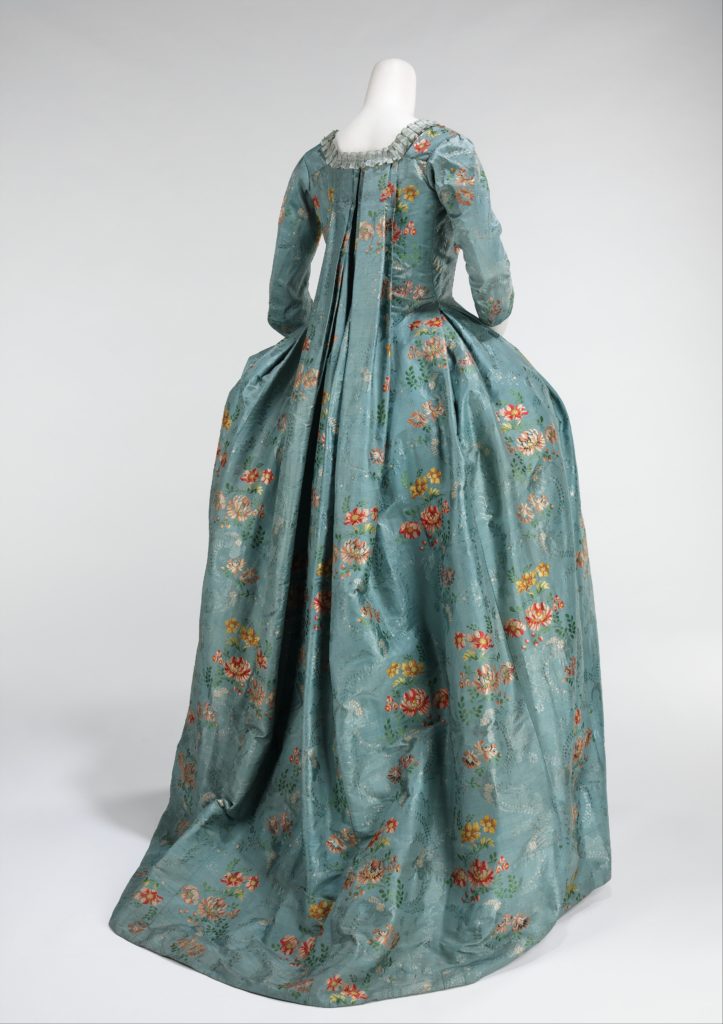
Fortuny pleats is the second famous name for a specific pleat. Mariano Fortuny’s exact techniques are still unknown to this day, but he was a master for small, irregular pleats used on his dresses. His most famous dresses were called Delphos.
I mean, that elegance ! It’s made of silk that he dyed and pleated himself. I was lucky enough to attend the exhibition in Palais Galliera in Paris in 2017 and was amazed by how modern it all was ! I also went to visit the Fortuny shop in Venice and was so happy to touch the fabric ; because the annoying part for any textile lover like me in museums, is that you’re not allowed to touch anything 🙊
Fortuny’s dresses were very comfortable, corset free, and allowing movement, following his peer Paul Poiret.
Mme Grès is also a super famous fashion designer from the 20th century [well okay, maybe only in the fashion industry, but she was a true master of draping !]. She was sculpting fabric, very often a mat silk jersey, heavy and supple, on the mannequin, fixing and pinning every pleats of the fabric by hand herself, down to the militer. As I mentioned in my live video about draping fabrics on a mannequin, draping is all about listening to the fabric, and how it wants to behave, fall, act. She completely did that with her jerseys, creating amazing designs. I will just let the pictures speak for themselves, as I’m sure you’ll see how precise, beautiful and elegant her dresses were ! [I did miss the exhibition in 2011 in Paris, how sad !]
Pictures : Magazino26. Click on the pictures to enlarge them !
In the 1950’s, Balenciaga, Dior and his peers were using pleats mostly to create subtle volume and ease in movement. I like how a simple pleat actually create the entire garment, giving at the same time its unique shape, an interesting detail or ornament, while staying super refined.
Issey Miyake, in the 1990’s, started his famous Pleats Please line with a different approach. In Japan and the East, when making clothes, the body doesn’t influence the design. The garment is cut by flat pattern making. The fabric is the biggest influence, rather than the body like in the West. Western civilization usually adapt the fabric to the body, cutting it so that it follows the shape of the body. In the East, they allow clothes to create a space between the body and the fabric. They mostly work by cutting rectangles of fabric, not so much round shapes ; that’s how the kimono sleeves were born [one sleeve is one rectangle of fabric, stitched together in the bottom.]. From this different approach, Issey Miyake developed his Pleats Please collection : simple shapes, made out of pleated polyester, creating durable, light and thin garment.
Click on the pictures to enlarge them !
A lot of fashion designers have used pleats in its many shapes, styles and techniques to create garments and interesting textures. If you want more inspiration to pleated fabrics, follow my dedicated Pinterest board :
But now, let’s review the different ways to make pleated textiles !
How to make pleats ?
There are a lot of ways to create pleats with fabrics ! Whether it’s to create volume or just an interesting texture, the creative possibilities are endless ! But there are 4 main ways to pleat fabrics. One is by stitching, the second is by heat-pressing fabric, the third is by using chemicals to pleat fabric, and a few techniques are still entirely hand made. Keep on reading to learn more, and see which one you want to try !
Usually, pleats work better with thin or average weights and thicknesses, but feel free, as always, to try anything you like ; that’s how you get amazing surprises !
#1 : Stitched Pleats
Stitched pleats are all the techniques that uses the sewing machine to create pleats. Let’s see the different types that exists !
Topstitched Pleats
These types of pleats are made by stitching the top part of the pleats, then pressing the rest of the length. They are regular, every pleat is similar, and mostly parallels. When a garment has these pleats, and the wearer isn’t moving, the pleats are closed. They open when the wearer is walking and moving. They are made when sewing the garment only.
Several patterns exists, including :
Accordion/Knife pleat – Box pleat – Inverted box pleat – Side pleat – Sunburst/Sun ray pleat
Pictures : International Pleating. Click to enlarge !
Tuck Pleats
Just like top stitched pleats, tuck pleats use stitching to create pleats. But with tucks, the stitches are all the way through the pleat. A lot of different designs exists, the most common being the pin tuck, the release tuck, and the crossed tuck.
Pictures : SewGuide. Click to enlarge !
Gathering
This is a very general term to talk about any fabric that create pleats by pulling on a thread.
A thread is passed through the fabric (by hand or machine, but with a very large stitch ; a basting stitch). By pulling on the thread, the fabric “retracts” ; it creates pleats and volume. The more you pull on the threads, the more pleats are created.
Ruché
Ruché is a gathering technique, made on narrow bands of lace, ribbon or fabric that it used to embellish clothes or home pieces. Instead of just a thread, it is most often gathered by a stitched elastic.
Shirring
Shirring is a way to make irregular pleats by sewing straight lines. At least 3 stitches are necessary to create shirring. The pleats are called gathers, and create a lot of texture. The stitches can be done with elastic threads to accentuate the gathers.
Pictures : Pinterest & By Hand London
#2 : Heat-pressed Pleats
This type of pleats uses a mechanical force to pleat the fabric, and heat to fix them. For a permanent effect, only polyester can be used. The effect doesn’t last on natural fibers.
Heat pressed pleats can be made in 2 ways, that creates 2 different styles : Machine pleating, which is an industrial technique, and Cardboard pleating, which is hand made.
Industrial or Machine Pleating
Machine pleats are made industrially, with a machine automatizing the entire pleating process. You can see videos of the process here :
The fabric is placed by the employee between 2 rolls of silk paper, and the machine creates and heat the entire sandwich together. The fabric is rolled with the paper still attached if it’s made by meter, and sold like that. On the videos, only small pieces are pleated, so it indicates that you can also pleat fabric that is cut following your pattern.
This machines can only make quite regular patterns, such as :
- Accordion pleat
- Side Pleat
- Sunburst pleat
The most well-known designer using pleats for his collections is of course Issey Miyake and his “Pleats Please!” line. To create his clothes, he starts by sewing them together, 3 times bigger. Then he pleats the fabric, to obtain the final size of the garment.
Pictures : Issey Miyake. Click to enlarge !
Cardboard pleating
The second style and technique is completely hand-made, used for Haute-Couture garments or small scale productions. The principle is the same, but the pleats can be much more complicated, and the patterns are called “fancy pleats”, with no special name to differentiate all the amazing possibilities that exists.
The fabric is placed between 2 pieces of cardboard or kraft paper that are already pleated, instead of flat rolls. By pressing them, the fabric takes the shape of the pleat. The heat or steam fixes the pleat. A few companies still make these pleats : Lognon and Ciment Pleating. Watch the video below to see the entire cardboard pleating process by Lognon !
But you can definitely try to make these pleats at home, and make them permanent with a pressure cooker [Definitely one fabric manipulation technique I’ll try soon !]
Jule Waibel is using the cardboard pleating method, with the same pattern on a lot of different objects and materials, creating an entire universe that she called “The Unfolded Universe” [She definitely was (and still is) a big inspiration for my own Creative Textile Studio] Check out her work :
Depending on the technique and the thickness of your fabric, you can pleat a fabric before or after stitching it ; you can pleat the fabric by meters, or only the cut pieces of your garment’s pattern, or the entire finished and sewn garment [That’s how the Pleats Please collection by Issey Miyake is made !]. Just be aware of the shrinking ! Pleats Please clothes need 3 times more fabric than the size of the finished garment.
#3 : Chemical Pleating
To pleat natural fabrics, chemicals must be used, as the heat pressing method doesn’t last on natural fibers. Depending on the effect needed, different chemicals are applied on fabrics, as well as heat and sometimes pressure. Fabrics are chemically pleated by meters, not after being cut or sewn. It makes these fabrics harder to cut and sew. The pleats can be a bit regular or quite random, as needed and depending how the chemicals are applied.
Some usual patterns and name :
- Accordion pleats (mostly on silk)
- Crystal, Mushroom or Jewellery pleats (mostly on silk)
- Plissé : Caustic soda is “printed” on cotton fabrics in lines or other pattern, to give the illusion of crepe fabric. The printed portions shrink and cause the fabric to cockle. Other names : Bark Crêpe, Crinkled
- Seersucker : Same technique as Bark Crêpe, printing stripes in the length [True seersucker is normally achieved by playing with warp tensions but chemicals can achieve a similar effect]
Click on the pictures to enlarge them !
#4 : Hand made Pleats
Made by expert pleaters only, this is quite technical to achieve, if you want to have the same effect on several clothes in production. But it is quite fun to try to pleat your fabric yourself and express your creativity ! Whether on the fabric you just bought, or on a finished/stitched garment to add texture, everything is possible. Let’s see a few techniques from fashion masters, and one technique I invented !
Draping
Like Mme Grès, pinning on a mannequin the pleats you want, and then stitch them together.
Fortuny pleats
By the silk, dye and pleat master Mariano Fortuny, were made by hand. The exact technique is unknown, but it was probably pleated while the cloth was dumped in water, then heated to make it permanent.
Test for yourself, & Invent your own technique !
By hand, there is so much less constraints, so you can go crazy and invent your own pleats ! I just love pleats as a fabric manipulation technique.
For a collection I made, I wanted to play with the idea of modules and origami. I came up with this small pleated organza square, that I duplicated hundreds of time, to create this jacket and skirt. I hope this inspire you to go a step further in your creations !
Did you learn something reading this ? I have a lot more tips for you !
Join my free community ! Click to access my free facebook group and get daily advices on fabric manipulations, textiles and creativity ! [This group is for you if you’re a Creative Soul wanting to learn more about textiles ! Click the link and request to join, I’d be thrilled to have you inside !]
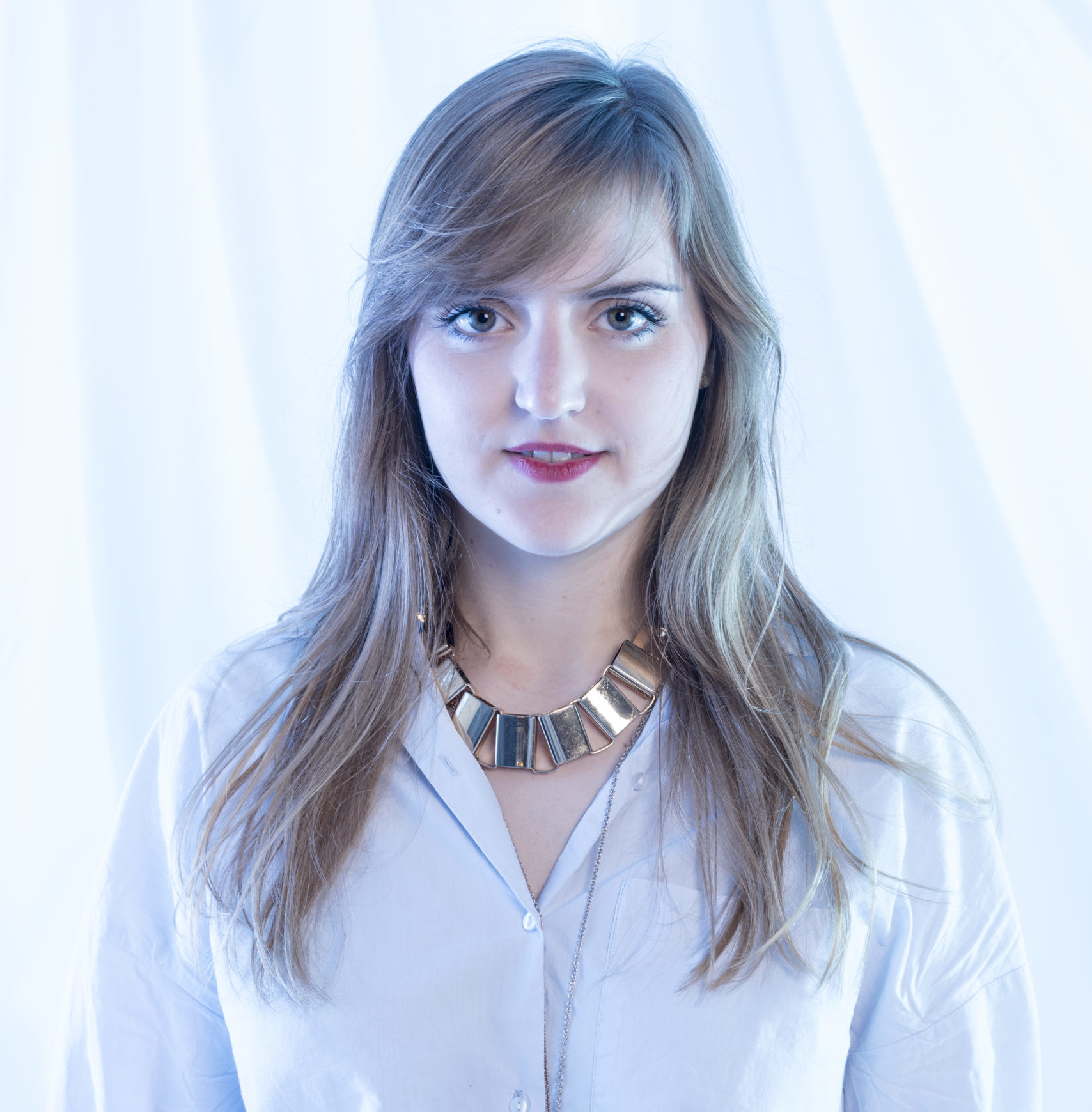
Floriane Schmitt is a textile designer, sharing her knowledge about textiles + creativity. She graduated with honors at a Parisian fashion school in Fashion Design & Fashion Business, and started her career with Flo Home Delight, her creative textile studio. Discover her collections on www.flohomedelight.com. She is also teaching creative souls how to become better designers, using textile as a main medium.


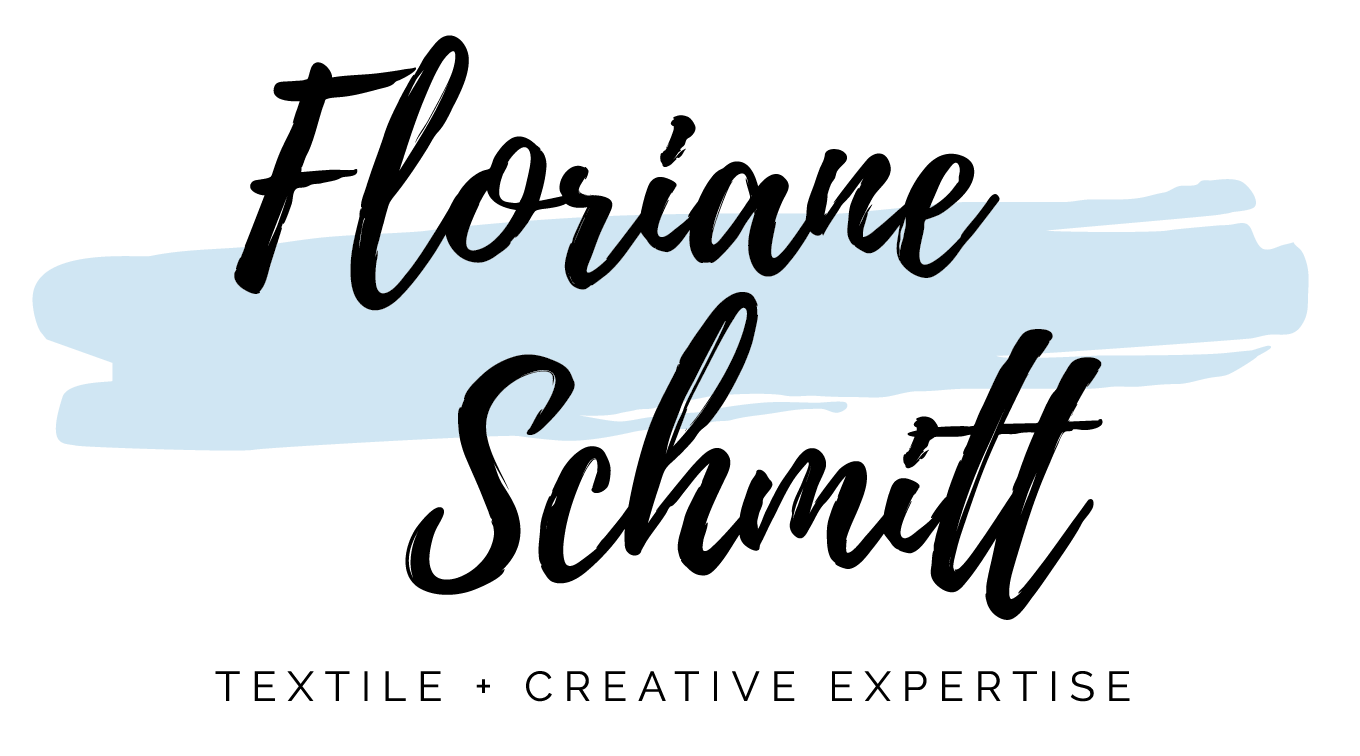
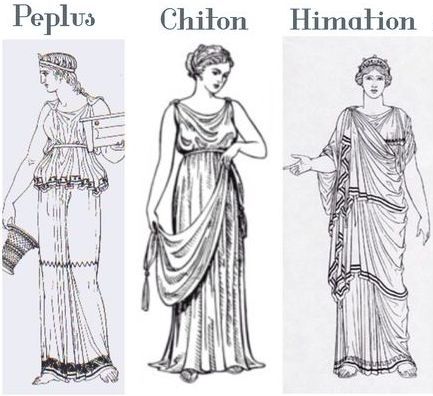
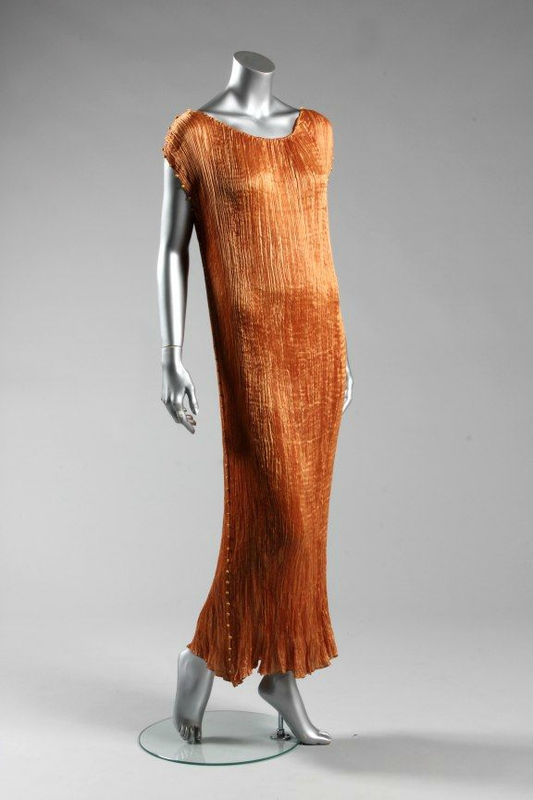






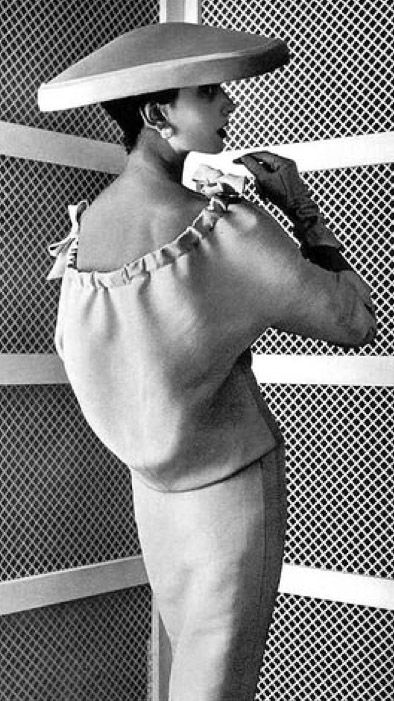
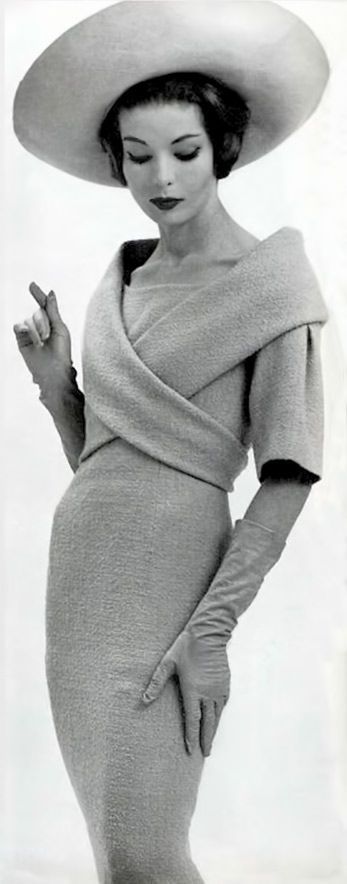
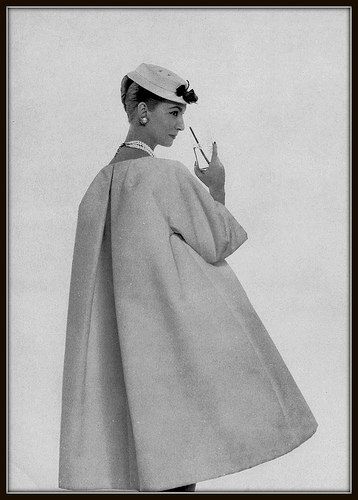

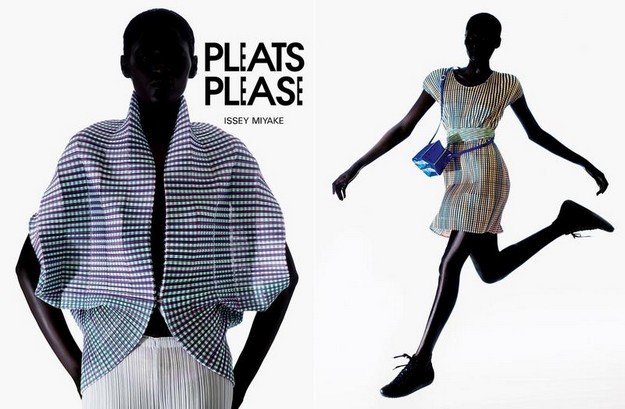
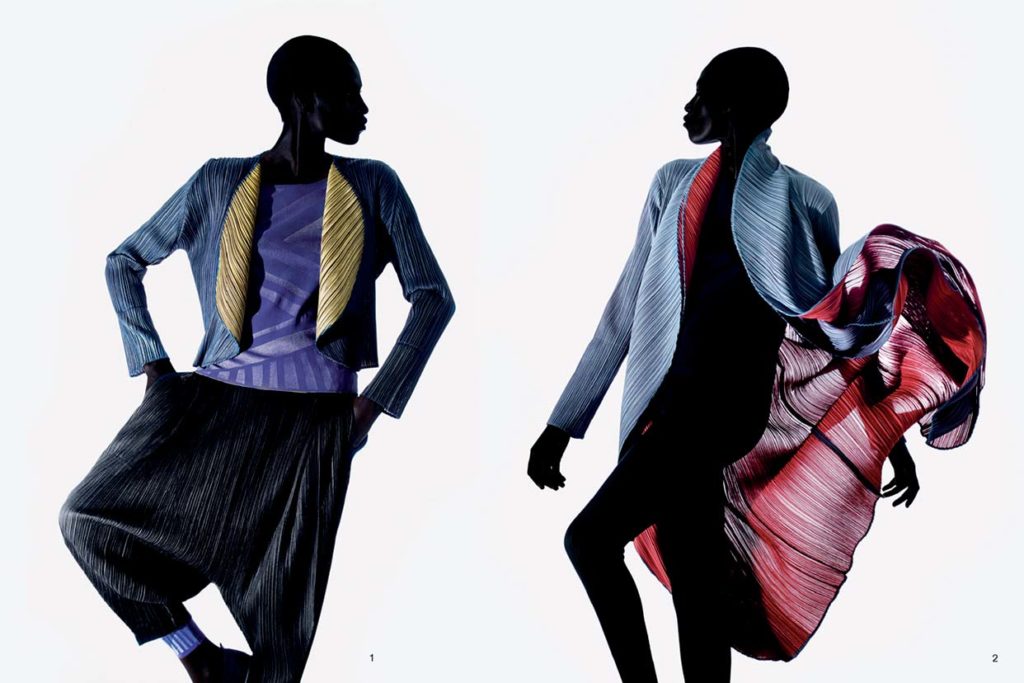
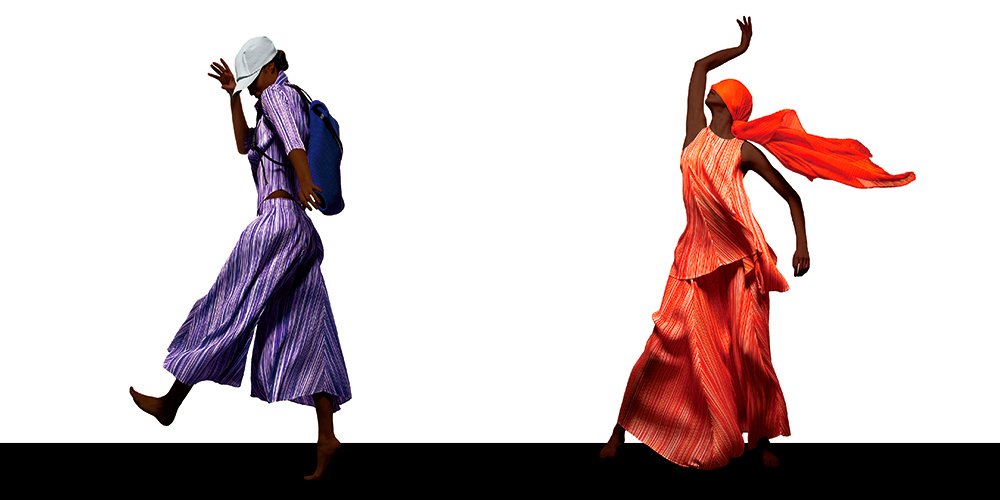
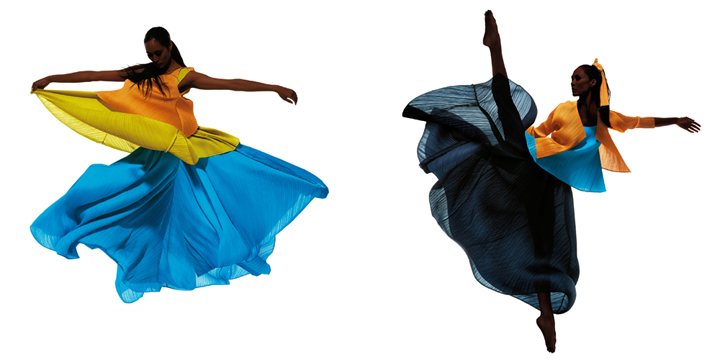


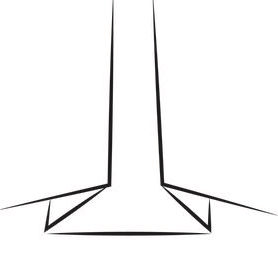



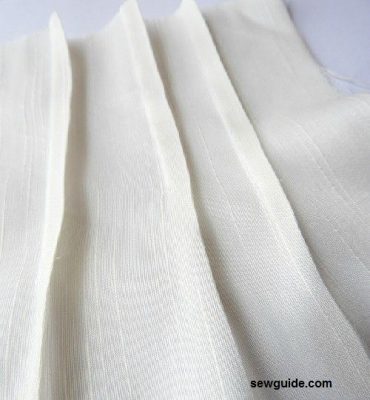
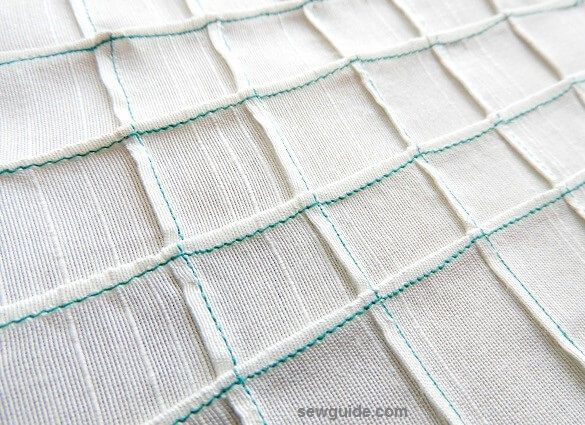
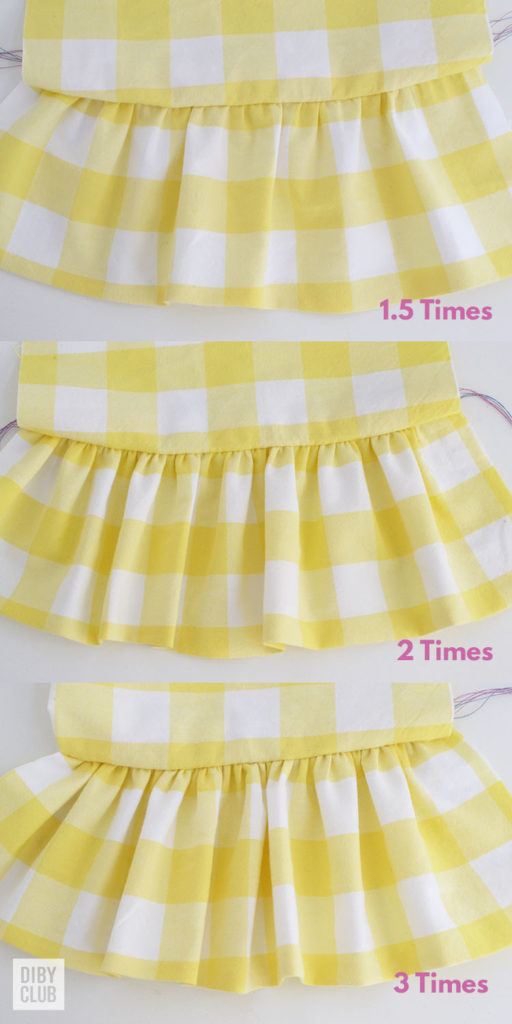

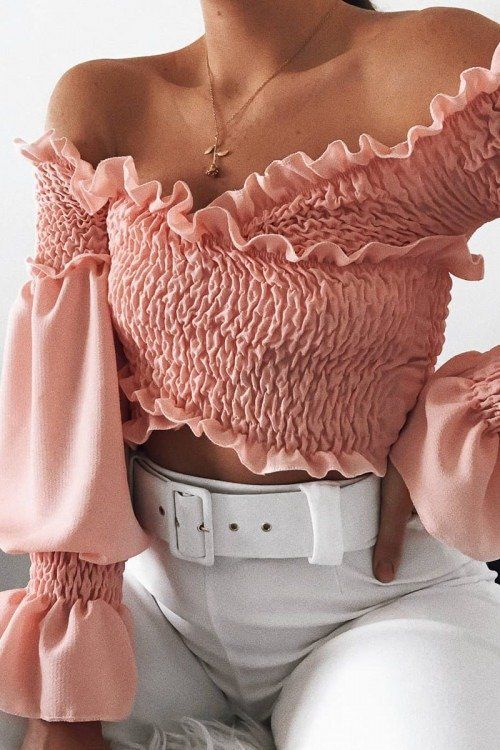

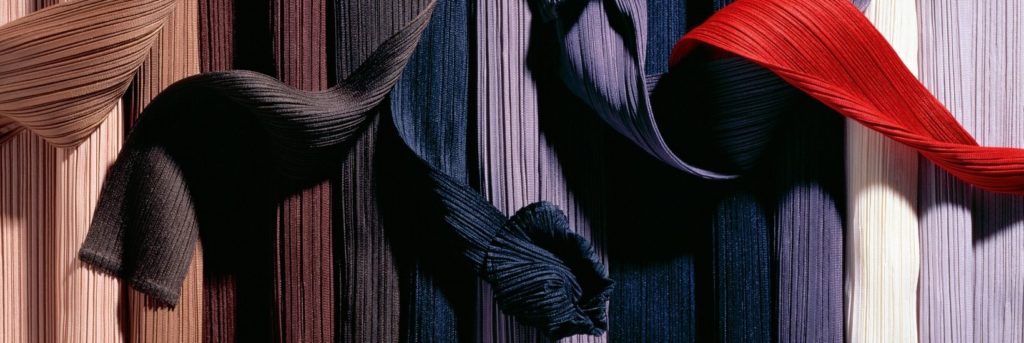
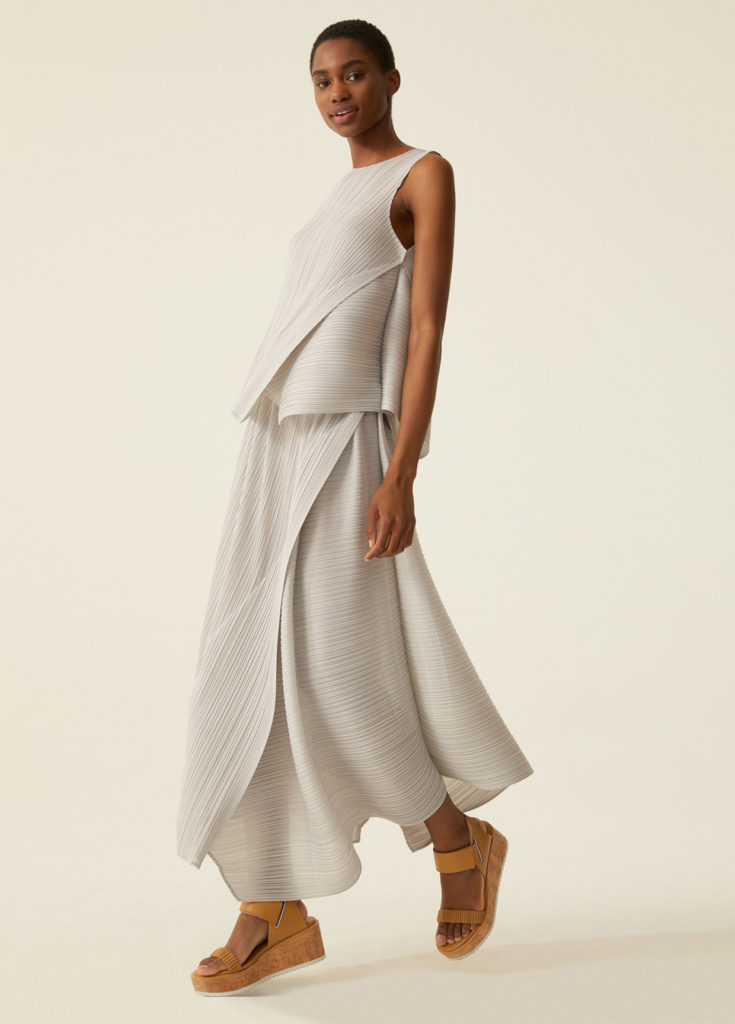
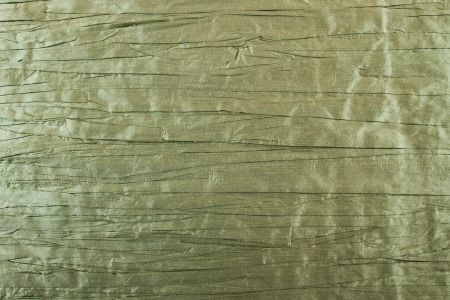
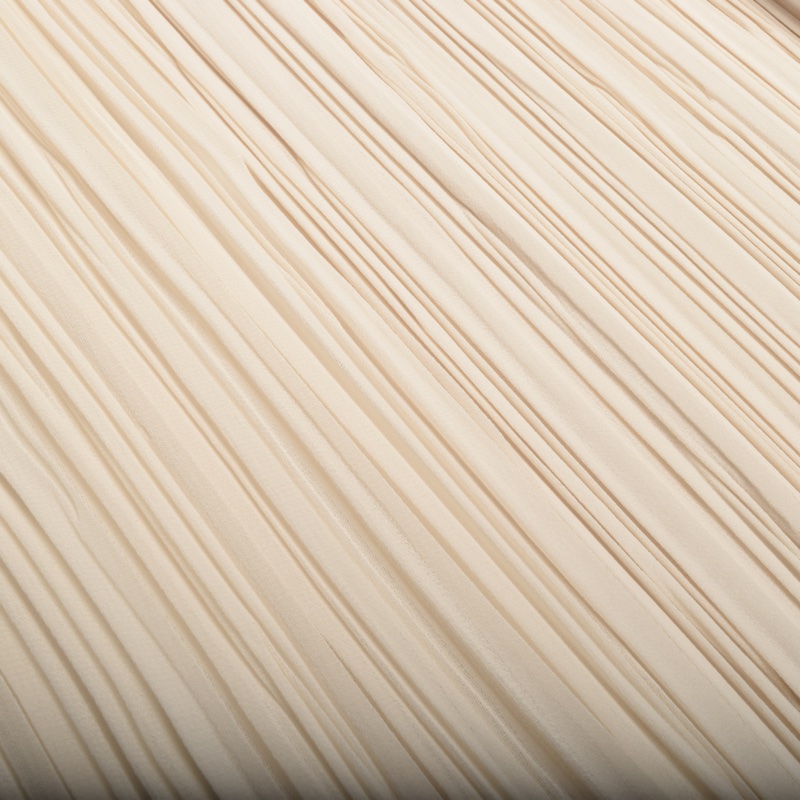
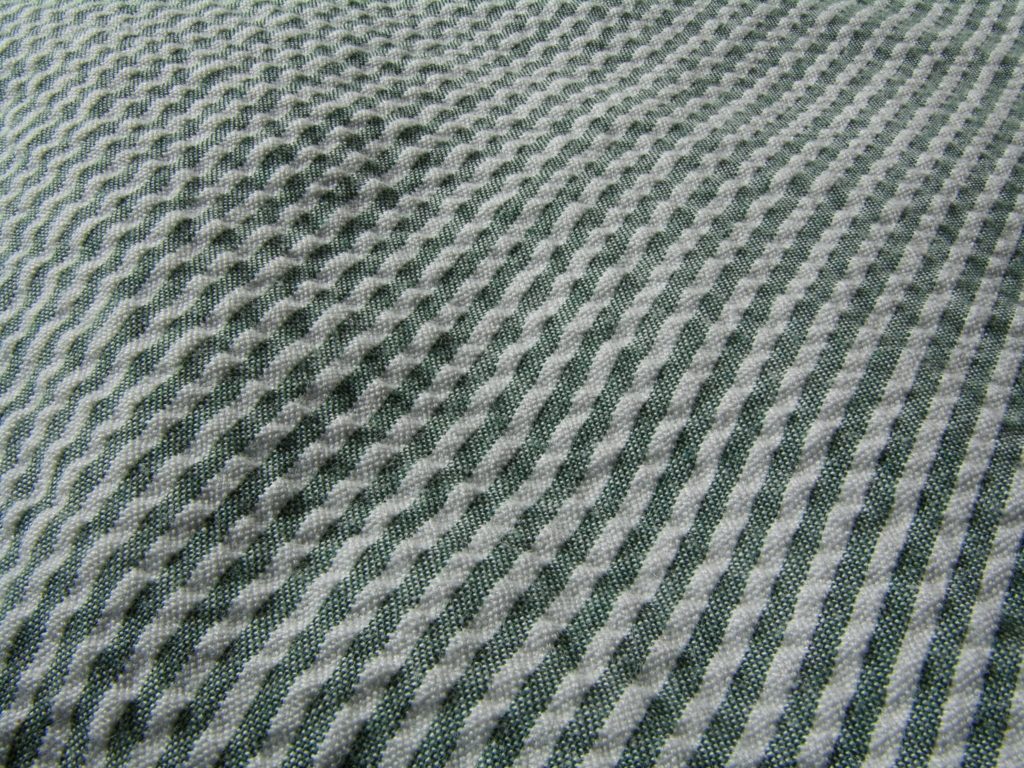






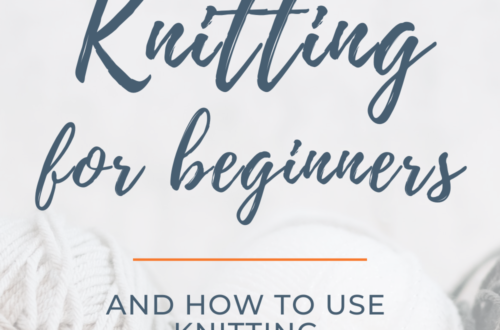
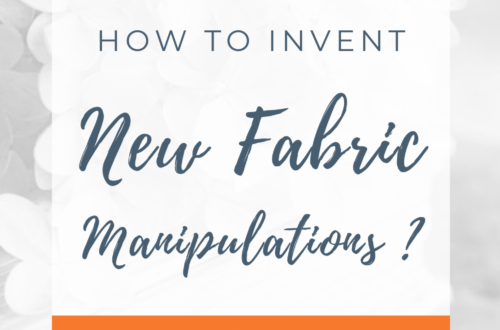
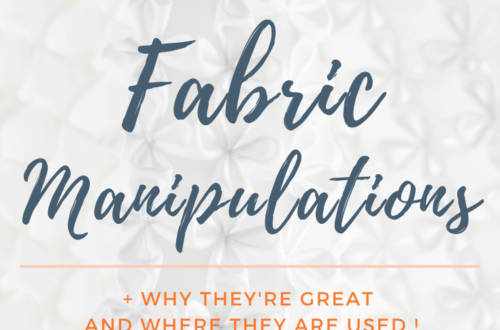
4 Comments
Ritu Gupta
How to have irregular pleating on leather
Floriane Schmitt
Hi ! Not sure exactly what technique is the best, it depends on the effect tout looking for ! But the secret is always experimenting and see what happens when you have fun with materials ! I would use any technique using steam/water but I’m guessing heat would work. And since it’s not a synthetic fabric, the effect would never last as long ! Have fun experimenting 🙂
Lynne Meiers
Can you recommend a pleat for a cotton sateen to best reflect light?
Floriane Schmitt
Hi Lynne ! I’d choose a cardboard pleat, because it has a lot of sharpe edges and clean surfaces that reflect the light more, and there will always be a surface that the light can hit, even when the fabric is moving 🙂